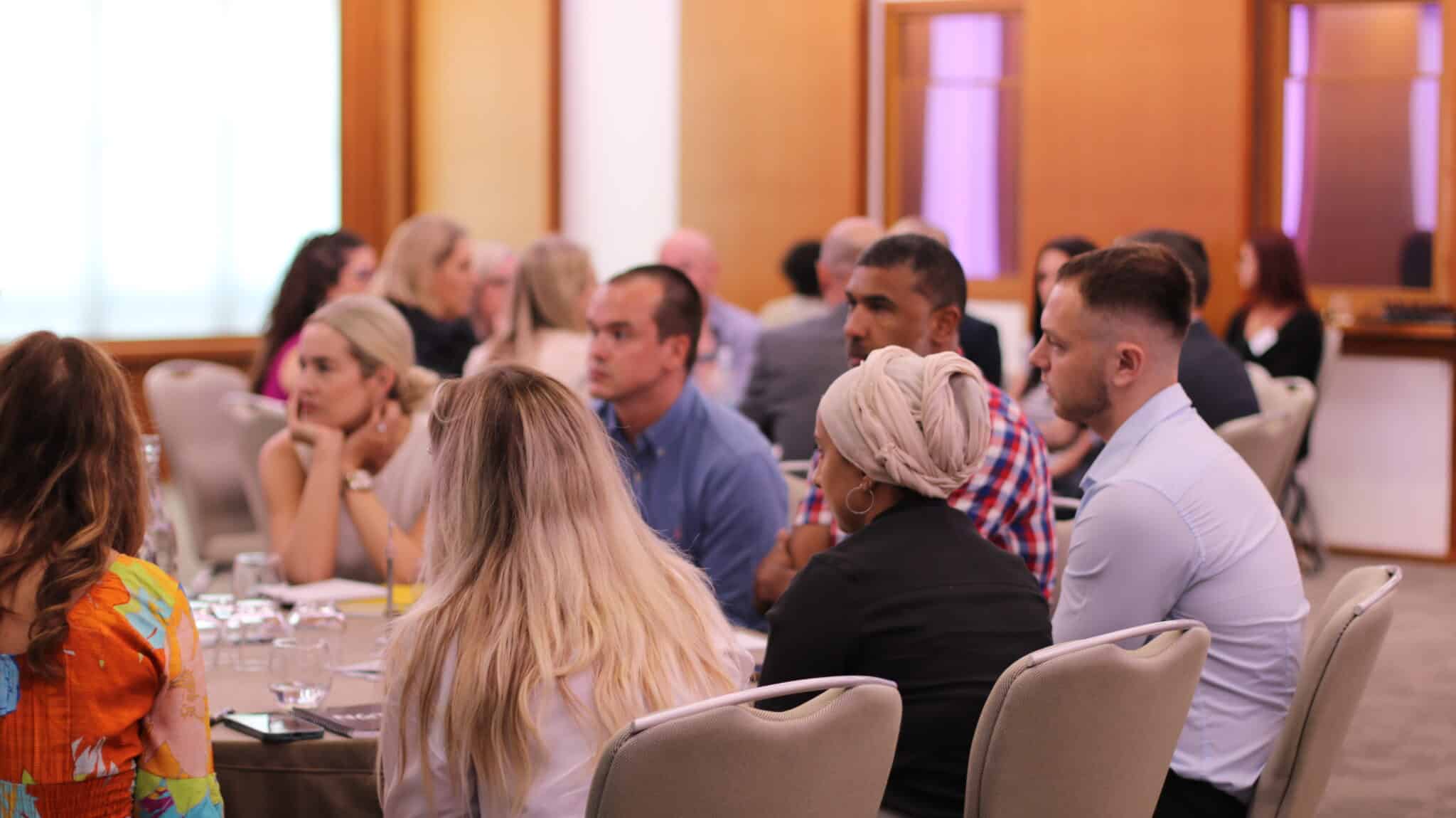Emily Shanks, Awards Executive at TALiNT Partners spoke to TALiNT Partners Member, Melissa Hewitt, Head of HR Outsource at Morson Group about the benefits and potential pitfalls of hiring versus outsourcing for long and short-term HR projects, outlining the flexibility of an outsourced model and where specialist expertise is required.
ES: What are the benefits of an outsourced approach?
MH: An outsourced approach gives businesses the flexibility to deal with peaks and troughs, as opposed to hiring a resource that might only be used some of the time. Some of our clients might have a core team supporting them with day-to-day operations, but then sometimes need specialist advice or additional support during busier periods. In those situations, we can quickly bring in expertise or resource from our wider team to meet that demand. What we’ve found historically with clients is that outsourcing operations like administrative work or the employee relations churn allows HR leaders to apply a strategic focus instead of getting bogged down in the day to day.
There are also benefits when it comes to peak periods; things like early carers recruitment, for example, which is quite high volume but really important in terms of the long-term strategic goals of a business. By outsourcing it, you can make sure it gets the focus it needs and is done well while removing the burden from your internal team, allowing for the continuation of other projects.
The final point, particularly when it comes to smaller businesses or startups, is about risk reduction. There is a lot of risk related to employees and failure to comply with employment law, so having an expert partnership in place provides businesses with that reassurance around legal compliance and the reduction of risk in relation to the people working in their teams.
ES: What are the kinds of scenarios where this could be a useful quick fix for an organisation?
MH: We sometimes work with clients where there’s been a sustained period of absence in the team or people have handed in their notice. Unfortunately, as with life, these kinds of things are like buses; you might be smooth sailing for a while and then suddenly there’s a high volume of change. In these situations, we can plug in and helicopter the right person into the team to get them through the period of turbulence and provide a bit of consistency, absorbing the extra workload so that no additional pressure is created.
It’s hard when someone leaves a team, as recruitment can be quite tricky at the moment, especially when it comes to getting HR colleagues with the right level of experience. So outsourcing can prevent businesses from experiencing a dip in knowledge and expertise within the team because that support is on hand while they’re recruiting or while somebody’s finishing out their notice period before joining the team.
An outsourced approach also makes project support and specialist knowledge immediately available. So, rather than having to go to market for an OD specialist, a business can get that knowledge at the drop of a hat to support with more strategic projects.
Some clients have also taken the outsourced approach to handle the more sensitive issues. So, if there’s a particularly sensitive employee relations case where it might not be appropriate for the internal HR team to be involved – or if there’s a conflict of interest within the team – we have come in to manage that case and maintain that sensitivity and confidentiality or remove that conflict of interest, reducing risk around the management of that process.
ES: When might it be preferable to hire instead of outsourcing?
MH: It’s preferable to hire when there’s a steady position within your team that you see as an internal role.
What we tend to see is a mixed approach, as outsourced teams often complement internal ones. You might have one generalist HR person who is able to outsource the admin that they do. Or there may be instances where, as a startup, you can’t justify having a full-time HR person on site so it makes sense to outsource, but as the team grows you might want more of an internal HR presence. It’s dependent on the type of organisation, the size of organisation and what they are comfortable with outsourcing.
An outsourced approach also makes project support and specialist knowledge immediately available
ES: How does an outsourced model help if there is a need to scale up the HR department quickly?
MH: We have a client that is well established in Europe but wanted to set up a branch in the UK. We were brought in to quickly set up the payroll for them and set them up with contracts, so they were able to recruit people and start developing the UK branch. That’s quite a specific example.
HR departments might also need scaling up if there’s particular investment, or a need to restructure, or a specific project that demands additional support. For example, as an HR professional, you understand that a collective redundancy programme or collective consultation programme takes a significant amount of work. HR is a support function and it’s usually quite restricted with the budget it has to work with, so it’s valuable to be able to temporarily tap into resource that can support you through that period.
Scaling up can also apply to the knowledge that’s available. There are lots of different specialists within HR and having quick access to that knowledge allows you to scale up in a different sense. So it’s not in terms of the numbers of the team but the resource available and the access to knowledge.
ES: Can an outsourced model provide any cost benefits?
MH: In some instances, yes, there are definitely cost benefits. Particularly if you’re in a startup position where it’s cheaper for you to look at outsourcing and getting a specific amount of HR support rather than recruit somebody, be that full-time or part-time.
Personally, we pride ourselves on providing a white-glove service where our team becomes a seamless extension to the internal HR team. Our clients have access to dedicated resources, so there might not be a substantial cost reduction because the focus is on making sure that there is a high level of dedicated support, not just somebody at the end of the phone, for example.
We have been able to provide significant cost reductions by utilising internal knowledge or expertise to remove clients’ reliance on an additional third-party providers. For example, we’ve been working with one client on their graduate recruitment process. We’ve been able to build some of the assessments internally rather than looking at a third-party provider which, for that client, has been a cost saving of around £30,000.
ES: What sort of projects has Morson’s HR Outsource department been involved with?
The support that we provide is really varied, so there are a range of projects that spring to mind. Because we provide the full spectrum of HR operations (admin, employee relations etc) we’ve had exposure to things like large-scale consultations and complete business transformation projects. Early careers is another area of support that we pride ourselves in, making sure we’ve got really inclusive graduate assessment processes. But it goes beyond that to making sure companies are looking holistically at where they might be able to utilise their apprenticeship levy. So, while some of the projects we’re involved in are just processing graduate applications due to the sheer volume, others are about asking the right questions, making sure we’re using the right providers and utilising the apprenticeship levy as much as we can. So, at the end of that kind of project we tend to produce various reports to highlight risks or areas for improvement, such as how to implement more ED&I. We also offer benchmarking packages, looking at what benefits people have and making sure that’s competitive. From a consultancy point of view, they tend to be more organisational design type of projects that we’d work on. And we do a lot of ED&I consultancy, so we can do scoping exercises – an ED&I health check, as it were – to recommend focus points. So, it is quite broad.
ES: Can you give any examples of how this has benefitted a client in terms of specialist expertise and the agility to respond to changing requirements?
One of our clients, a public sector company, had to create a new business unit to respond to a change in their remit linked to legislation. The business itself is fast moving; however, large-scale change like that doesn’t happen often for them, so they really needed that specialist knowledge to guide them through that process. We also had to take into consideration the sensitivity around the fact that, if you hear the word ‘consultation’ and you’re an employee who isn’t used to that level of change or that sort of terminology being used, it can be very unsettling. So we worked hard with that client to make sure we were delivering the message in the right way that wouldn’t cause an adverse reaction. There was a lot of risk around the turnover and the recruitment and the type of people they’re trying to attract, so they didn’t want that to be damaging in any way. At the same time, the goalposts kept moving for this client, as they were the end point of a chain and other factors beyond their control meant timelines were constantly shifting. What we worked hard to do was establish an operating model that had that agility and adaptability by doing a phased mapping of roles. So, we looked at it very much from a skills matrix and a capability or upskilling matrix so that where one person might be filling ‘X’ role within a structure at the start, they then transition to fulfil another position to support the continuation as the change continued if that makes sense.
ES: What’s the typical length of an HR Outsource project?
This varies. Where we’re providing more integrated services in the sense that we’ve taken over administration or are providing that full operational piece, we’d usually look at a contract length of around three years. Where it’s more of a consultancy project it can be anything from three to eighteen months. Where we’re just providing that specialist employee relations support to a client it might just be a few days that we’re with that client, completing an investigation and providing our outcomes.
ES: How does the service work from a practical, collaborative, and strategic perspective?
MH: From a practical point of view, our model is based around having a dedicated point of contact and dedicated support. We get to know a client’s business really intrinsically, which allows us to have a clear understanding of what their strategic goals and objectives are and align what we’re delivering from an HR point of view to the client’s broader strategic ambitions. So, the service we provide is positioned so that we become that strategic partner. It takes an openness from both parties and so it’s really important for us to build that collaborative relationships with clients to ensure that we’re able to then adopt that strategic approach to our delivery.
To find out more about TALiNT Partners Membership, download the pack here.











